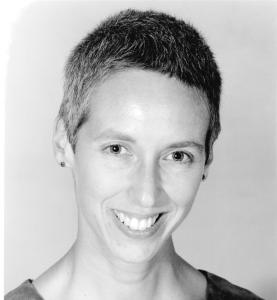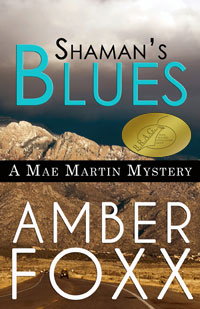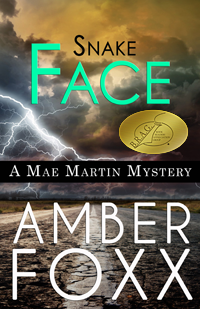
AMBER FOXX
It’s harder than writing the whole book! How many authors have said that about the back cover blurb? I know I have. At some level it can feel more challenging to get those few words right than it did to get the entire novel in satisfactory shape. It’s a different kind of writing.
If you’re a plotter, you might write the blurb along with your outline and find it easier than a “pantser” or a hybrid plotter/pantser will. Those of us who work that way don’t know how the story works out until we’re done, so we usually have to create this short, tempting piece of reader bait after we have spent months to years immersed in the depths of the story. That adds to the challenge, because we have to step back from the details of the plot. Some of the least effective blurbs are like synopses.
A good blurb
A: Makes readers want to know what happens in the story.
B: Helps readers decide if it’s the kind of book they like.
The instigating incident for your plot belongs in the blurb. What sets the ball rolling? Like much of what goes in this description, it’s in the first chapter. Is this going to be about a murder, a missing person, a romance, an international crisis, a family drama, or something strange and terrifying?
The setting of a book matters to most readers, so a simple statement of the location is useful. If the place is well known, all you need is its name. If it’s unknown, it may need a short description. Small African village. Wealthy Connecticut suburb.
The reader needs a sense of who the main character is—a name and either an occupation or a smidgen of background, just enough to raise the reader’s interest. Too much backstory and description will kill the blurb. This character then needs a goal. This is what will make the reader care. What is the risk, challenge or danger in seeking that goal? Drop a hint. (This is the hardest place to avoid clichés.) End on that note, a question or an implied disaster.
X happens in Y, causing Z to happen to A. Now A must do XX, or ZZ will happen.
Z wants to do X in location Y, causing Z to happen to B. A and B seek opposite XXs. Who will win?
How few words can you use? This an opportunity to practice cutting excess modifiers. After you write your blurb, make a copy of it from which you remove all the adjectives and adverbs. Does it still work? Probably not quite, but almost. Put the needed modifiers back in. You may find that most of them were fluff.
Things to avoid:
- Comparing your book to other books. “An academic comedy on a par with Lucky Jim.” This kind of line belongs in a review, not a blurb.
- Ending with ellipses. I know some great books have them in the blurbs, but you can be more original than that. Finish the sentence. It can look lazy to trail off. Show the reader how well you can write.
- Too much information.
- Repeat words. Don’t say terror more than once, or any other key plot or emotional element.
Set the mood. If the book is suspenseful, create suspense. If it’s spooky, don’t tell readers it’s terrifying—give them a chill with your blurb. If it’s a comedy, don’t say it’s funny. Make them laugh. This example comes from the blurb for J.L. Simpson’s comic mystery Lost and Found, in which Daisy Dunlop’s case involving a missing stud poodle gets entangled with a murder investigation. “Would the sexual prowess of a poodle really incite someone to murder?”
My last advice for a successful blurb is to get feedback from people who have never read your work. They’ll be the ones who can see if it’s effective. People who know your work already want to read it and your critique partners know what happens next. I’ve gotten valuable help from total strangers on Goodreads who have suggested some of the hooks in my blurbs, and I’ve done the same thing for other writers, paying it forward. Some good blurbs are two or three tight paragraphs. I like to condense mine down to one. At least five people helped me polish the blurb that follows, and none of them had read the book. It was originally longer and had repeat words, too many modifiers and unneeded backstory. I’m sorry I didn’t save it for comparison. If any of you have some before-and-after blurbs you’d like to share, it would make for a good discussion.
Shaman’s Blues
 The second Mae Martin psychic mystery
The second Mae Martin psychic mystery
On the eve of her move to New Mexico (location and a little background about Mae’s life), psychic and healer Mae Martin (protagonist and what she does) gets a double-edged going-away gift: beautiful music by a man who’s gone missing, and a request to find him. (Instigating event and goal.) In her new home town, she quickly runs afoul of a questionable psychic who runs a health food restaurant. When Mae confronts her, the woman disappears—either to Santa Fe or into another dimension. (Sets tone: more light than dark. Adds investment in goal: This disappearance is her fault.) Now Mae has two missing persons on her hands. Finding them may prove easier than learning the truth about either or getting one of them, once found, to go away again. (Implied threat and challenge.)
The Mae Martin Series
 No murder, just mystery. Every life hides a secret, and love is the deepest mystery of all.
No murder, just mystery. Every life hides a secret, and love is the deepest mystery of all.
Amber Foxx is a college professor and yoga teacher as well as an author. She blogs at http://amberfoxxmysteries.wordpress.com .The book blurbed above and the next book in the series, Snake Face, received B.R.A.G. Medallions. She is currently working on the blurb for the fifth book in the series.
Leave a Reply